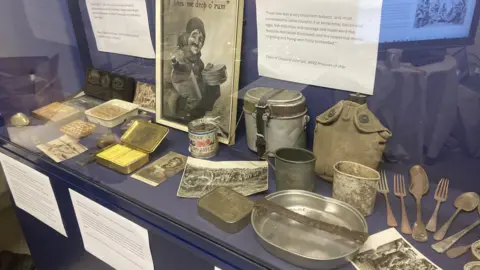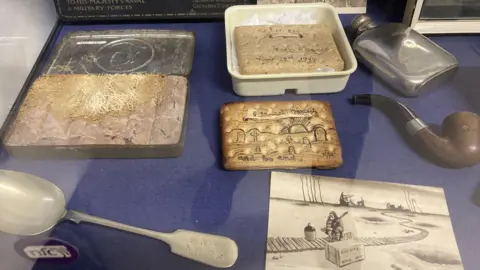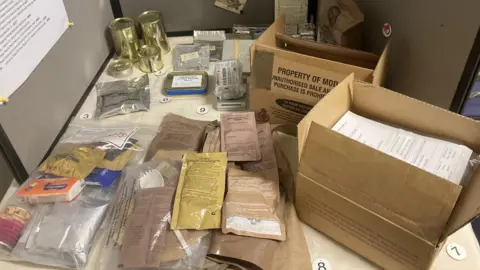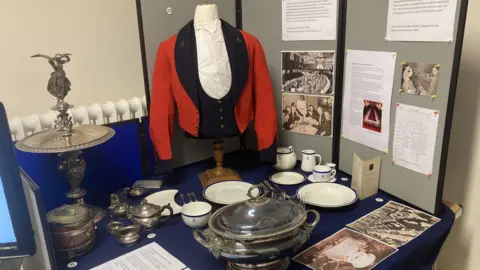Exhibition shows more than 200 years of Army food
 BBC
BBCA temporary exhibition in a Warwickshire museum will explore the history of how the Army has fed its troops over the last 200 years.
Rations & Cookers – 200 Years of Food in the Army runs from 15 February until 26 April at The Fusilier Museum Warwick.
The exhibition uses diary entries from Warwickshire soldiers, as well as objects linked to the Royal Warwickshire Regiment and Royal Regiment of Fusiliers, to paint a picture of provisions across centuries.
Entry to the display is included in admission tickets, and under-16s can enter for free.
Included in the World War One section are hard tack biscuits, which were made from flour, water and a small amount of salt, and were baked until they were very tough.
"If you tried to eat them, you'd break your teeth," said Chris Kirby, the museum's general manager.
"The idea of them was this indestructible food you could carry around with you anywhere. You wouldn't get attacked by vermin, it wouldn't suffer too much from different environmental conditions," he said.
"As soon as you put it into a stew or hot water you could make a food, a porridge with it."
Soldiers even used to write on the biscuits, some examples of which are displayed.

In World War Two, soldiers' food was more diverse and their diets more balanced, according to Mr Kirby.
They were given rations that were a combination of tinned food and dry, packed food.
The exhibition sees containers from this period on display, including some from the German side.
Alongside these are utensils such as spoons and forks, preserved from battlefields.
"What our research has suggested is, actually, the spoon is the most key utensil that a soldier will have to feed themselves with... forget a knife or a fork, a spoon is what you need," Mr Kirby said.

The earliest war depicted in the exhibition is the 1899 Boer War in South Africa.
Items from this period include chocolate bars and utensils.
"The bars of chocolate are still perfectly preserved," said Mr Kirby.
"Personally, as a chocolate lover, I don't know how anybody could have not eaten that a long time ago.
In addition to the display, there is a talk on 1 March led by Paul Colbourne, WW1 expert and former National Geographic correspondent.

Follow BBC Coventry & Warwickshire on BBC Sounds, Facebook, X and Instagram.
